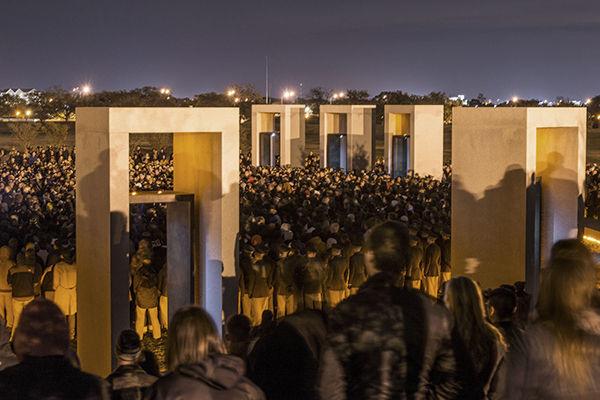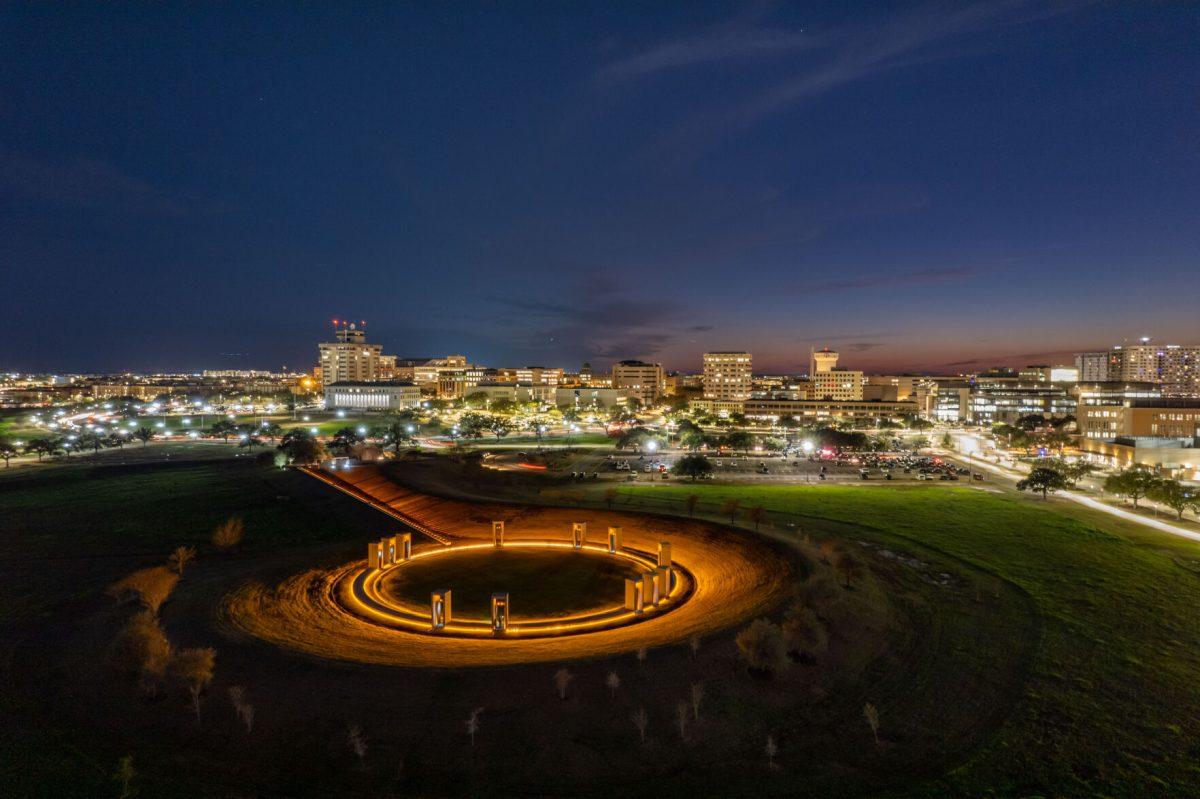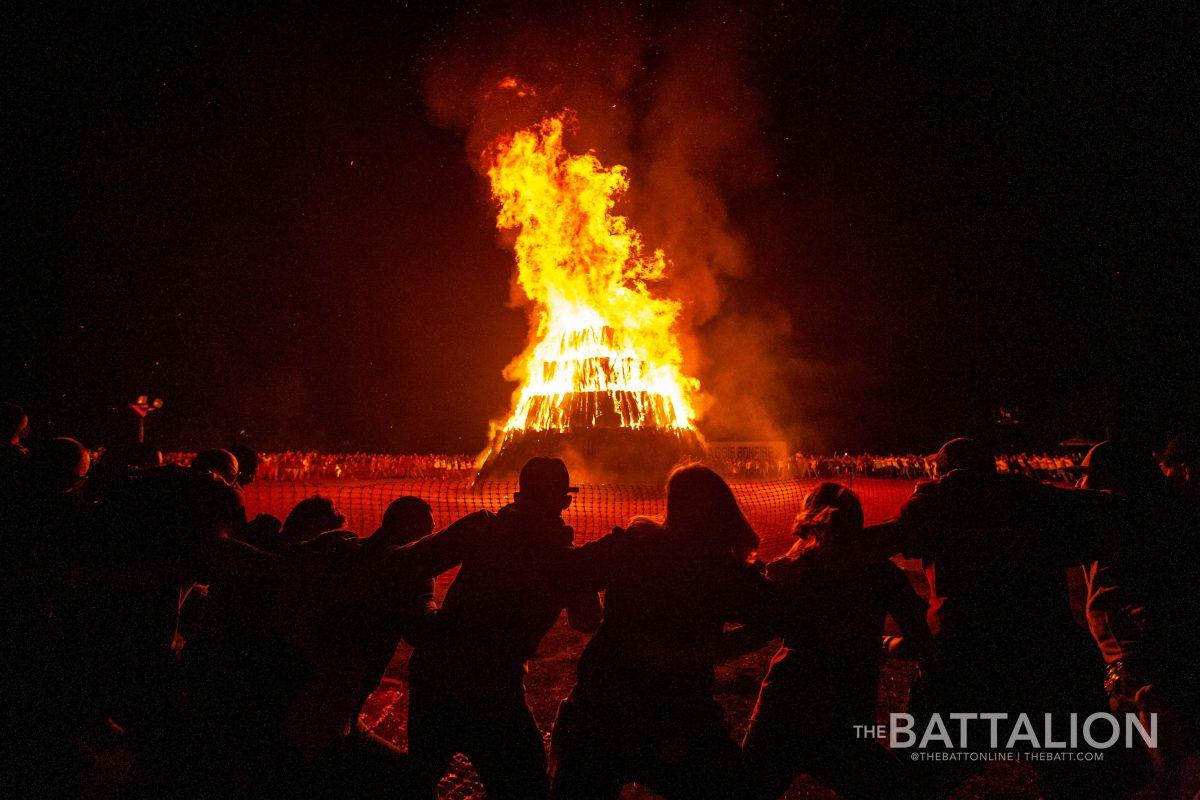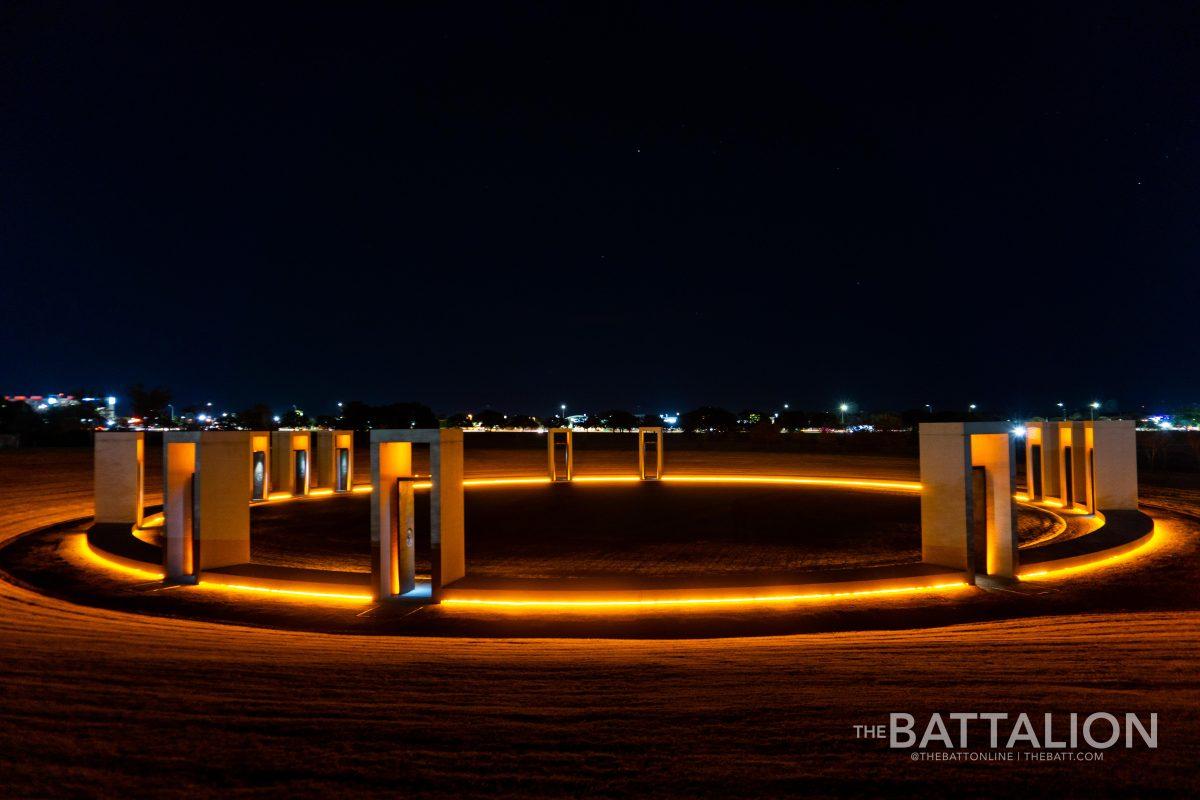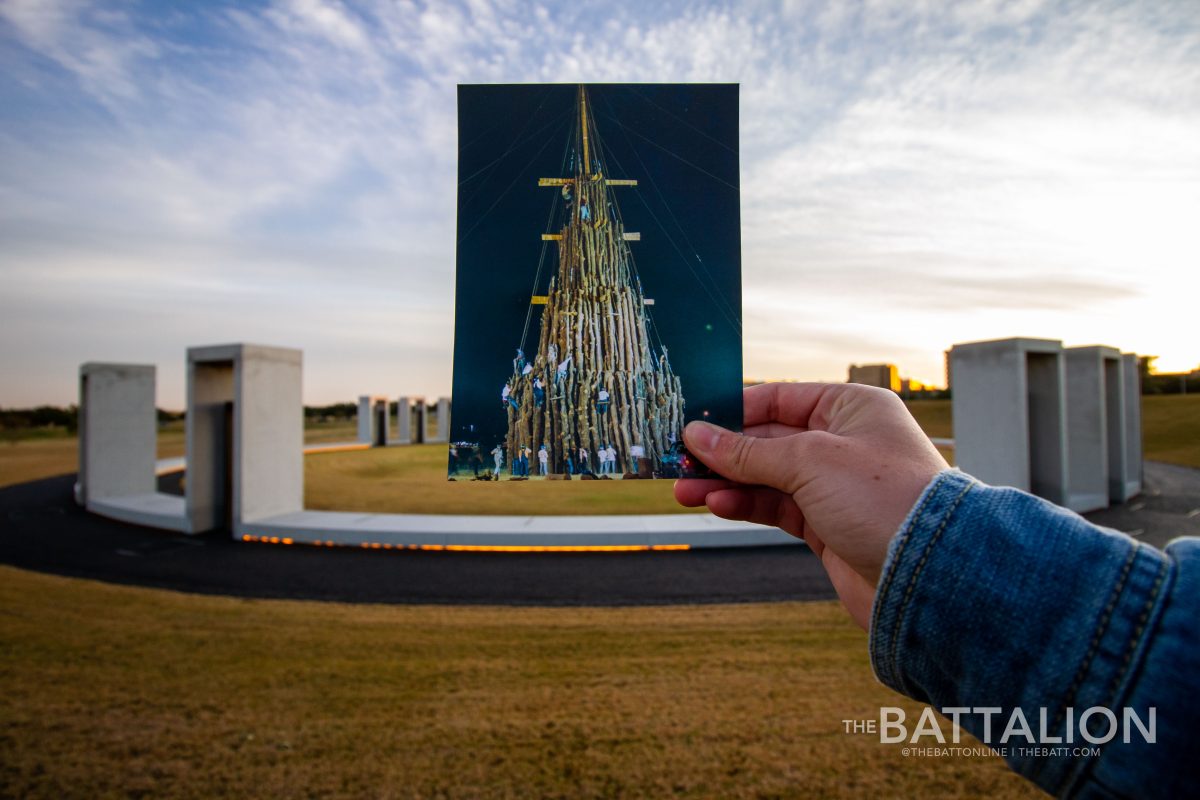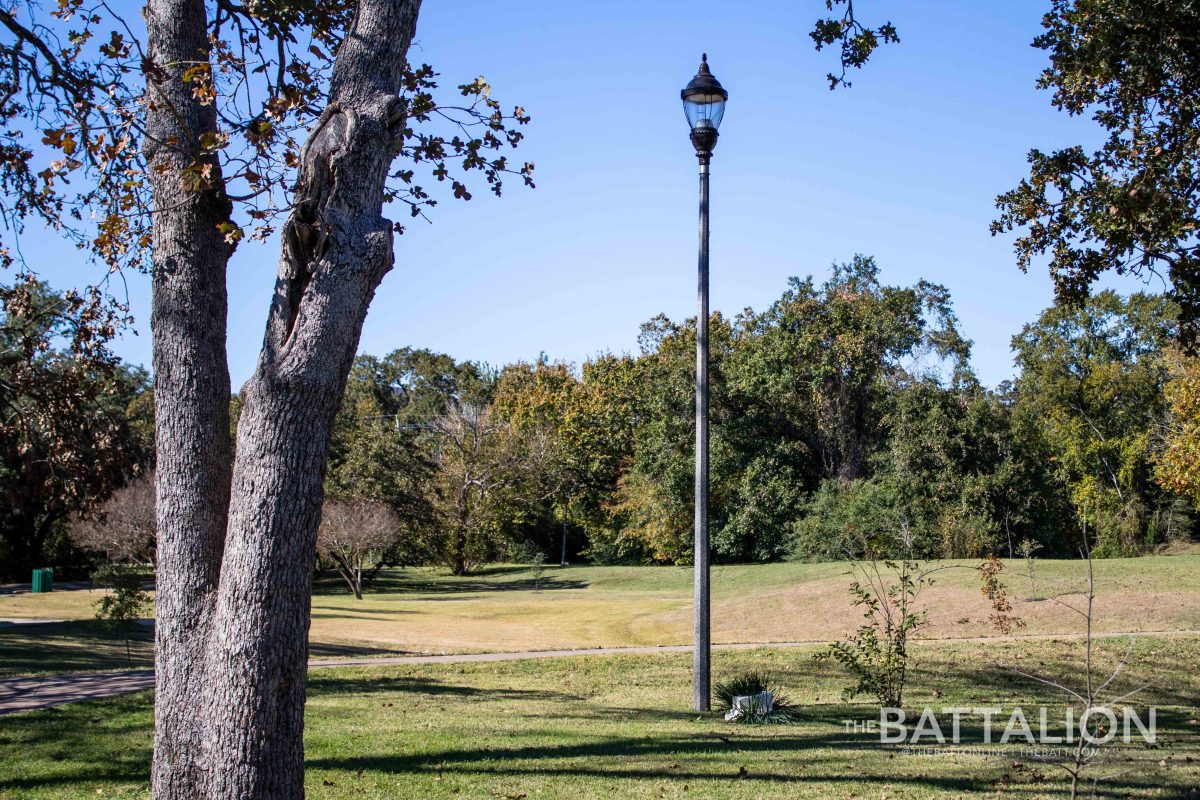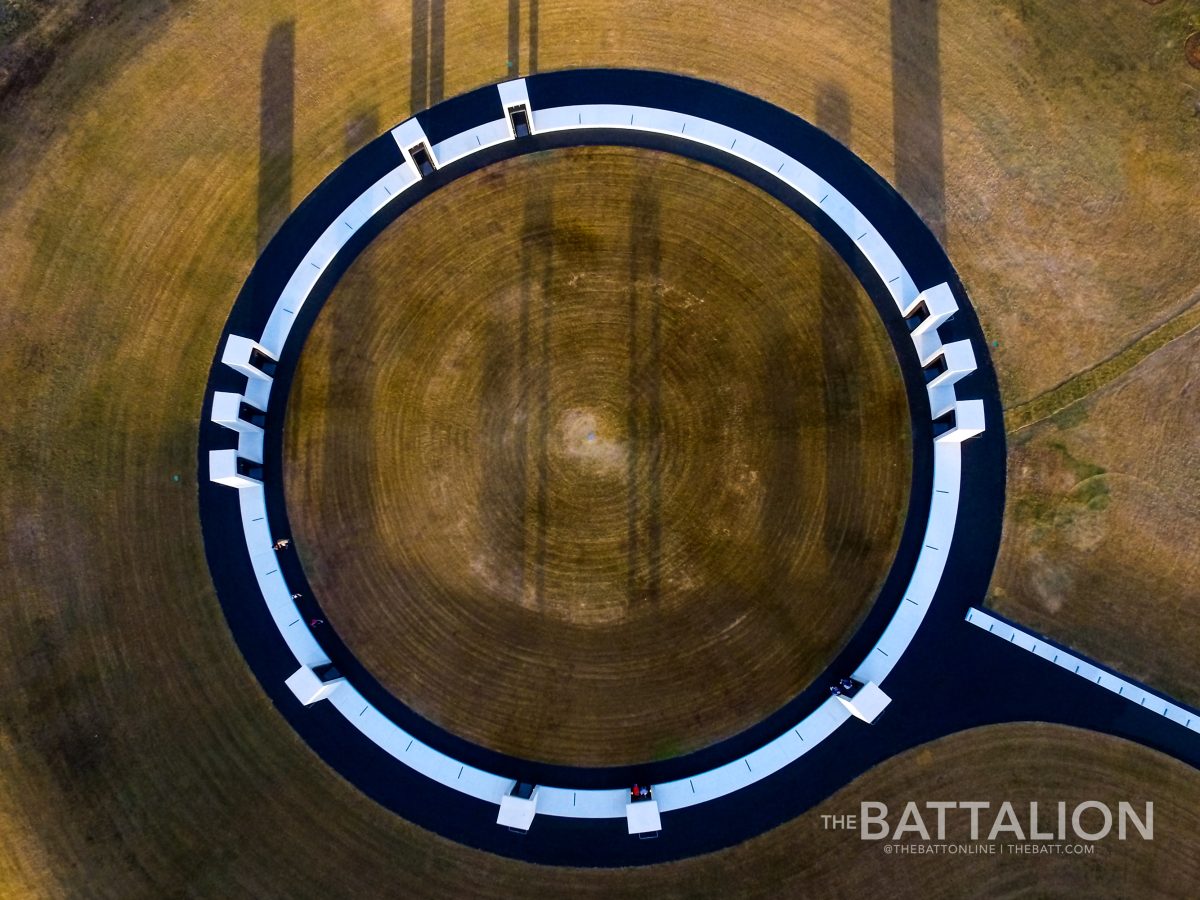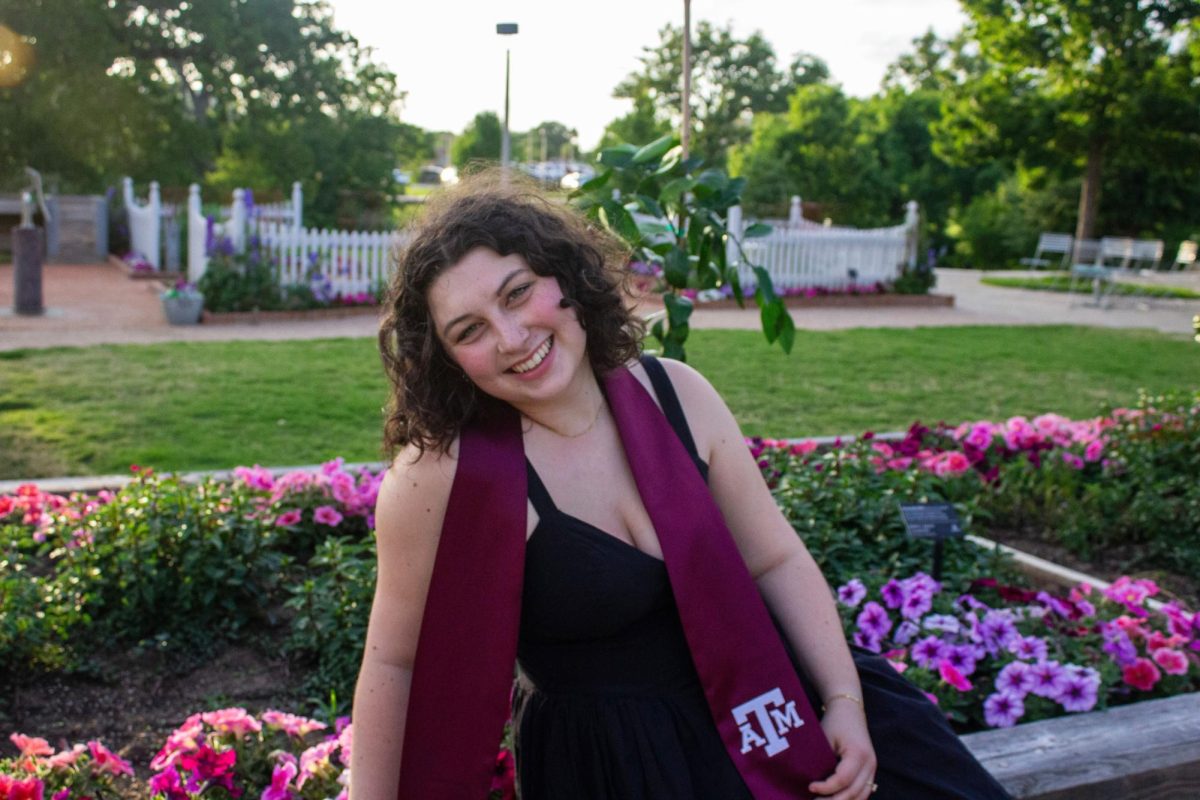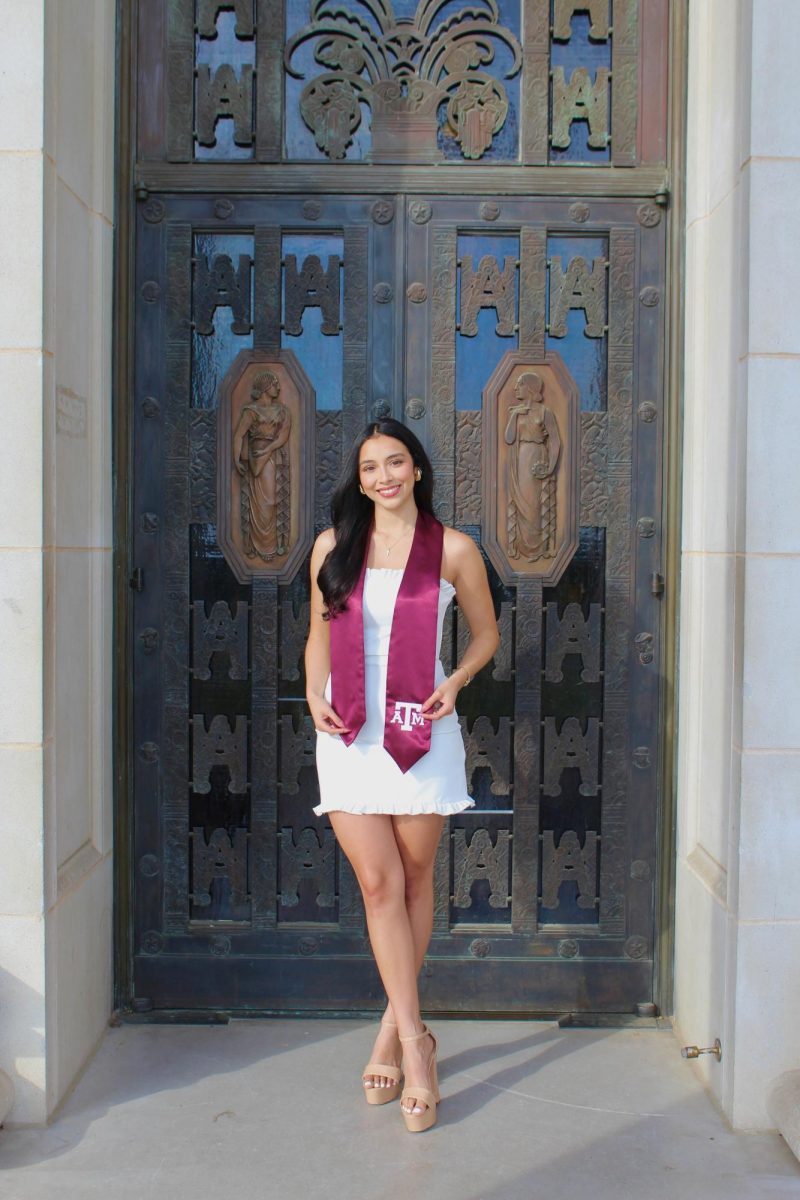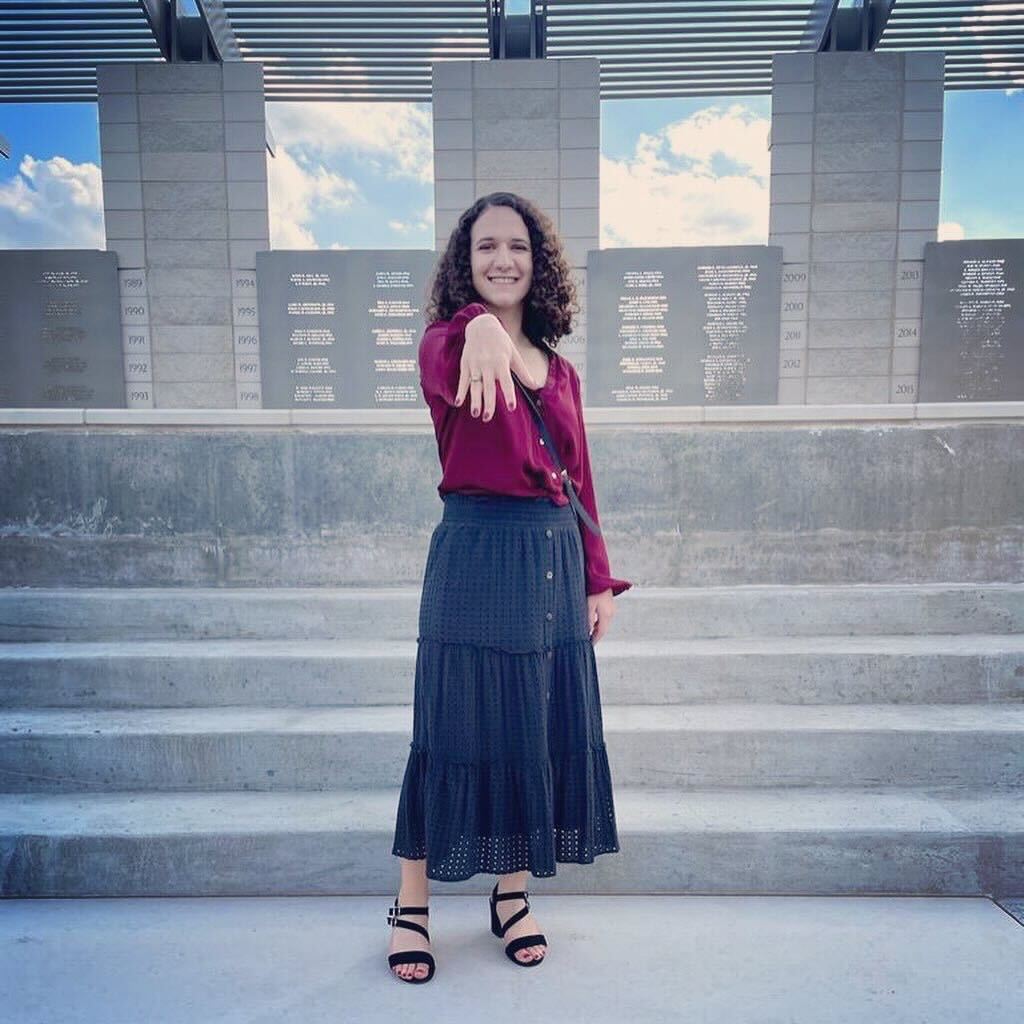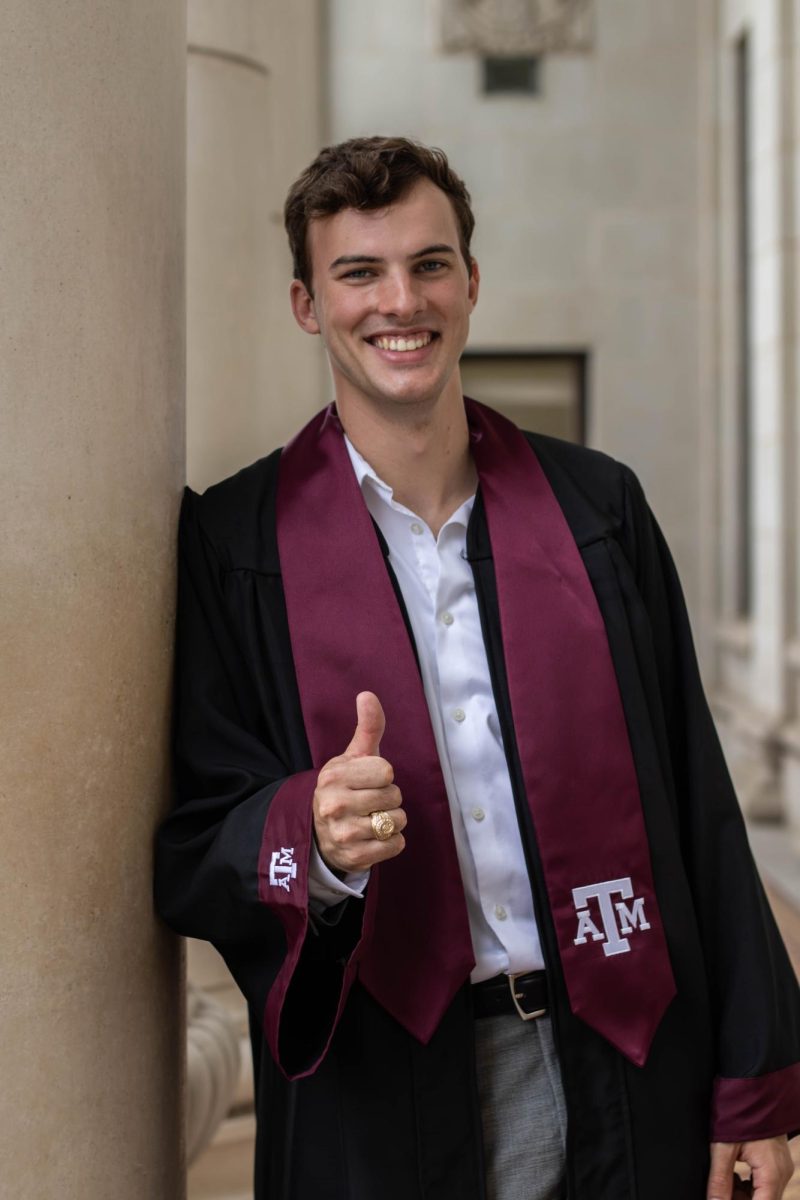Twelve students died and 27 were injured the morning of Nov. 18, 1999, when the annual Aggie Bonfire collapsed at 2:42 a.m. The Stack was built over the fall semester by students who managed all aspects of the physically-demanding, complex construction project.
The tragedy ended a tradition that had in many ways defined Texas A&M’s campus. The following quotes, taken from interviews with former students who were on campus in the years before and after the Collapse, tell the story and aftermath of the events that unfolded 16 years ago.
“Before I became a student, I always thought of [Bonfire] as the picture of when you see it burning. But then you realize that that’s just the end result. Bonfire itself was cut, and load, and stack, and push, and the actual building of it and the experiences that were forged during the whole event.” — Jason Jackson, Class of 2001
“So you pile out of your dorm room at 6 a.m. on a Saturday and go out into the woods and the mud and carry trees around with someone from the fourth floor of your dorm who you would have never met, except that you spent a weekend together hauling logs through the forest. And because of that, they were friends the rest of the time you were at school, and many times well beyond that.” — Robert Shemwell, Class of 1982
“I was in Squadron 16 in the Corps. It was a great time. We participated like all the other Corps units, and a lot of the non-Corps dorms did. It was something special every fall semester, all encompassing. If it wasn’t a game weekend, you were at Bonfire. And even during Push, 24 hours a day you had somebody working on it.” — Jason Jackson, Class of 2001
“The majority of my most favorite memories were being out at Cut. That was where the bulk of the work was done, going out and chopping down all the trees. That was where I spent the majority of the time. Especially being in the Corps, that was when you really got to not be playing the ‘Corps games,’ you got to just go out and work on something next to all the other students.” — Scott Jarvis, Class of 2000
“The morning of Nov. 18, there were some cadets that — my room was on the first floor right next to the stairwell in dorm 10 — there were freshmen cadets who lived upstairs who ran in and were just screaming, ‘Stack collapsed!’” — Tim Powers, Class of 2001
“There had been precedent for it falling before. It had fallen in ’94 or ’95 — it had more shifted, and bent over — so that’s what everybody kind of thought when you heard it had fallen. You thought, ‘Oh boy, we’re gonna have to rebuild this thing in two weeks’ or whatever so we turned on the television, there was a closed-circuit TV so you could watch 24/7 Bonfire being built, so we turned on the TV and just see emergency lights everywhere and started hearing sirens all around town.” — Scott Jarvis, Class of 2000
“No one knew how severe or bad it was, [just that] the stack fell and we need to get out there and figure out what we can do to help get it back together, right? Whenever it’s two-something in the morning, you don’t realize the intensity of the event. And then you get out there and realize, it’s not that simple. There’s people’s lives in danger, and you understand the severity of the situation.” — Ryan Jones, Class of 2000
“[We were] just being available to first responders in whatever capacity that was. A lot of that was moving logs. That was one of the first times that I approached someone and asked to borrow their cell phone — think about how common cell phones are now — but I approached someone, I clearly remember, because I wanted to call my family to make sure they knew I was okay.” — Tim Powers, Class of 2001
“There were several who were trapped who were pointing to other areas where they remembered seeing someone in that area and helping, even though they were hurt themselves critically, they were helping the rescuers in the small hours of the morning to find out where everyone was in the collapse.” — Michael Rey, Class of 2000
“We went and stood right outside the Commons and stopped every single car that was trying to drive by, some people were getting worried and just wanted to drive by and see it, see what was going on. So we stopped every car right there in front of the Commons and asked them if they were EMT certified, and if they could help with the medical emergency that was going on we would let those people go on through and everybody else we made them turn around and go back out.” — Scott Jarvis, Class of 2000
“By the time I got back to College Station, there was no longer a rescue effort. Tim [Timothy Kerlee, Jr, Class of 2003] was the last one, I believe, that was pulled from Stack, and they waited to pull him out last because of his internal injuries. They knew what they were, and they knew that once they moved the logs, he [wasn’t going to make it].” — Jason Jackson, Class of 2001
“We saw stretchers coming out covered in blankets, we knew there were people dead. Mid morning was when I realized, ‘Hey these are people that I know.’ That’s when it really started to hit me. That people I know, had known for years, are passed away.” — Tim Powers, Class of 2001
“I remember the yellow tape … You had the entire student body [there] to help their comrades, to help overcome this event, but you felt so helpless. There was just this little tiny piece of yellow tape keeping you from doing anything you could to help your buddies out.” — Ryan Jones, Class of 2000
“I had a structures exam, my last structures course. I was up there at 7:15 in the morning and saw it had collapsed and heard the news and understood what that meant. It was tough … We were at the top of the O&M building on the 12th floor in the corner classroom, so we could actually oversee the Bonfire while we were taking the exam, and most of the class was there, and our professor was, binoculars in hand, trying to see what was happening while we were trying to take the test.” — Michael Rey, Class of 2000
“When I went to eat lunch in Duncan, I sat down with a couple of guys, and we all recognized that Jerry Don [Jerry Don Self, Class of 2001] had also not been accounted for. At that point we were starting to realize there were deaths, and there were significant injuries … it was as much of a ghost town as I’ve ever seen Texas A&M.” — Tim Powers, Class of 2001
“[The bonfire site] was already becoming filled with flowers and memorabilia. People just pouring out their support and trying to help , help themselves and people around them somehow or another, to just mourn. There were reports of people passing away, people injured, critically injured, were all sort of pouring in that morning and the afternoon and the evening.” — Michael Rey, Class of 2000
“I didn’t go to class. All Corps activities stopped so we could cope and help take care of our own. I don’t remember what the university’s response was, whether to cancel class, or what was done.” — Tim Powers, Class of 2001
“The stack stayed there for quite some time before it was all finally, carefully untangled. Throughout the next month it was continuing the sort of living memorial, people coming from different states, different schools coming down … it was a loss that was felt across the state.” — Michael Rey, Class of 2000
“A lot of us would go during the day when we could to have some prayer time and support those who passed or who were injured or the families … It was solemn but prayerful but very much in the hope that those who hadn’t perished would not.” — Michael Rey, Class of 2000
“I recall some really intimate messages being left — a bunch of my friends left their Aggie rings at the flagpole in front of the Administration building, there was several people who had started makeshift memorials around the site. I remember a huge cross being erected, and people posting messages there on the cross … It was this outpouring from not only students but from the whole community.” — Michael Rey, Class of 2000
“I remember the vigil, but a lot of the other stuff was a blur … I do remember the vigil. It is hard to say it was closure. Even though there was 12 people killed, there was a lot of injured and a lot of people were hurt pretty bad. There were people in wheelchairs. I think it went from the shock of everything, to mourning, to the realization — this was probably after the ceremony — the realization that things had changed, that things would be different.” — Jason Jackson, Class of 2001
“I think the next fall was even stranger, because that’s when Bonfire should have been going. [You realized] how all encompassing Bonfire really was, not just the burning of it, but the activities that go along and the traditions and the subtraditions and what it was really about and why it was really special to people. It wasn’t just a stack of logs, that’s no big deal. I think that first semester of not having that there, it was a weird time.” — Jason Jackson, Class of 2001
“I think what’s interesting is, still going back there and still seeing people leaving things on the Center Pole stone is pretty amazing. Years after and still seeing that the memorial can be a place for people to reflect not only on the event but what it meant for the university and what it means for the Aggie spirit.” — Michael Rey, Class of 2000
“There’s something about the smell of campus or maybe just this area of College Station, especially during this time of year when it starts getting cool and rainy, it reminds me of Bonfire every single time. I don’t know if you could ever go back to that.” — Jason Jackson, Class of 2001
— Compiled by John Rangel

















